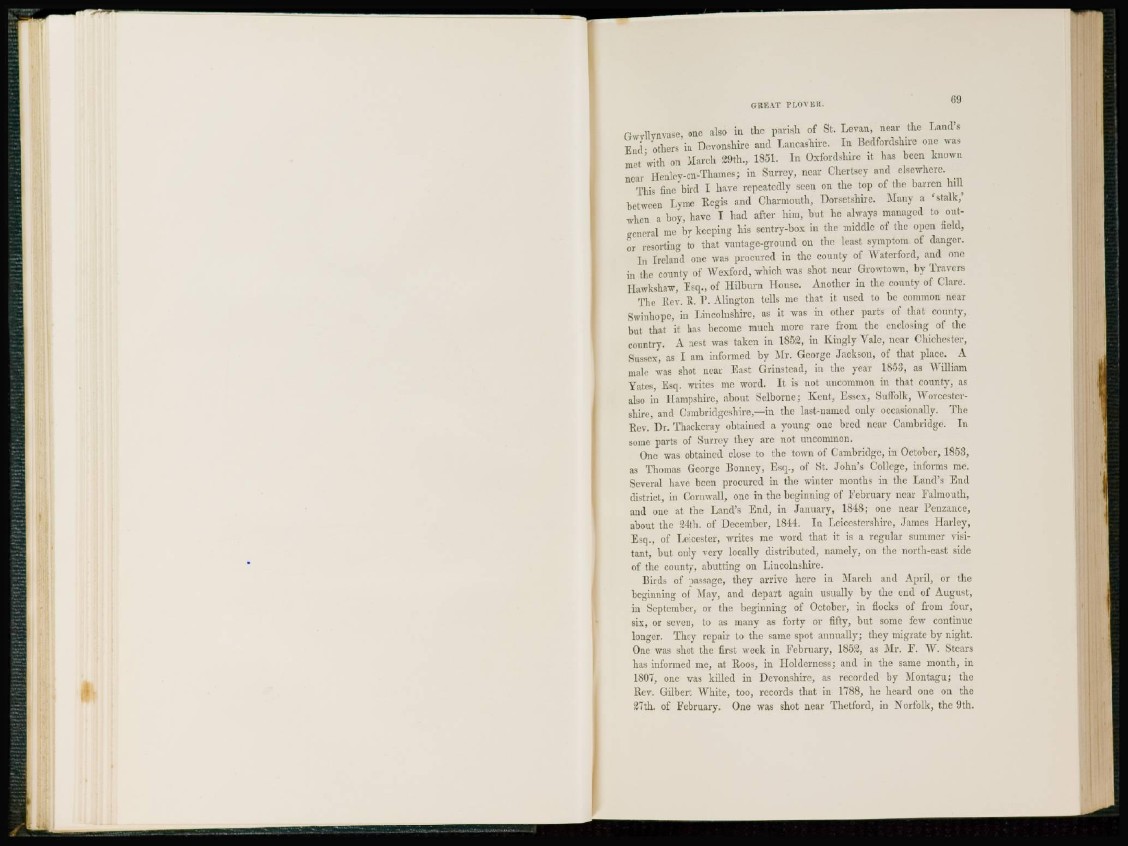
Gwvllvnvase, one also in the parish of St. Levan, near the Land's
End- others in Devonshire and Lancashire. In Bedfordshire one was
met with on March 29th., 1851. In Oxfordshire it has been known
near Henley-on-Thames; in Surrey, near Chcrtscy and elsewhere.
This fine bird I have repeatedly seen on the top of the barren hill
between Lyme Regis and Charmouth, Dorsetshire. Many a 'stalk,'
when a boy, have I had after him, but he always managed to outgeneral
rac by keeping his sentry-box in the middle of the open field,
or resorting to that vantage-ground on the least symptom of danger.
In Ireland one was procured in the county of Waterford, and one
in the county of Wexford, which was shot near Growtown, by Travers
Ilawkshaw, Eso;., of Hilburn House. Another in the county of Clare.
The Rev. 11. P. Alington tells me that it used to be common near
Swmhope, in Lincolnshire, as it was in other parts of that county,
but that it has become much more rare from the enclosing of the
country. A nest was taken in 1852, in Kingly Yale, near Chichester,
Sussex, as I am informed by Mr. George Jackson, of that place. A
male was shot near East Grinstcad, in the year 1853, as William
Yates, Esq. writes me word. It is not uncommon in that county, as
also in Hampshire, about Selbornc; Kent, Essex, Suffolk, Worcestershire,
and Cambridgeshire,—in the last-named only occasionally. The
Rev. Dr. Thackeray obtained a young one bred near Cambridge. In
some parts of Surrey they are not uncommon.
One was obtained close to the town of Cambridge, in October, 1853,
as Thomas George Bonner, Esq., of St. John's College, informs me.
Several have been procured in the winter months in the Land's End
district, in Cornwall, one in the beginning of February near Ealmouth,
and one at the Land's End, in January, 1848; one near Penzance,
about the 24th. of December, 1844. In Leicestershire, James Harley,
Esq., of Leicester, writes me word that it is a regular summer visitant,
but only very locally distributed, namely, on the north-east side
of the county, abutting on Lincolnshire.
Birds of passage, they arrive here in March and April, or the
beginning of May, and depart again usually by the end of August,
in September, or the beginning of October, in flocks of from four,
six, or seven, to as many as forty or fifty, but some few continue
longer. They repair to the same spot annually; they migrate by night.
One was shot the first week in February, as Mr. F. W\ Steal's
has informed me, at Boos, in Holder ness; and in the same month, in
1807, one was killed in Devonshire, as recorded by Montagu; the
Rev. Gilbert White, too, records that in 1788, he heard one on the
37th. of February. One was shot near Thetford, in Norfolk, the 9th.